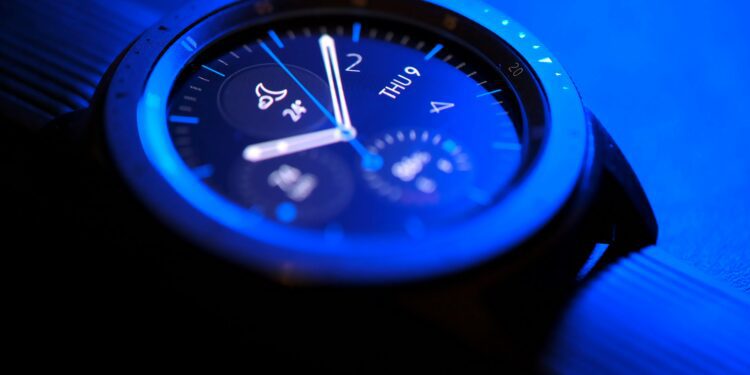The Disappearance of the Waiting Room
Until recently, diagnosis in medicine occurred primarily in discrete moments—a scheduled visit, a test result, a clinical evaluation. Now, through the proliferation of wearable devices and the integration of AI-powered decision-support tools, diagnosis is becoming ambient: an ongoing process, quietly unfolding across time, often without direct physician oversight.
This transformation is not theoretical. Apple’s heart rhythm notifications, Dexcom’s real-time glucose alerts, and symptom-checking platforms like K Health and Ada Health now regularly intercept disease signals long before a human clinician becomes involved. Meanwhile, AI algorithms, trained on troves of patient-reported data and health records, are producing differential diagnoses within minutes—offering patients probabilistic insight that rivals traditional triage in many settings.
As the American Medical Association notes in its ongoing research on AI adoption in diagnostics, these tools are not yet replacements for human clinical reasoning. But they are, increasingly, adjuncts—softly recalibrating how patients interpret symptoms and how clinicians prioritize care (AMA Digital Health Study).
Wearables and the Rise of Passive Diagnostics
The modern wearable is not merely a fitness tracker. It is a biomedical sensor array, measuring oxygen saturation, heart rate variability, skin temperature, respiratory rate, and—in some cases—electrodermal activity and motion signatures. Devices like the Oura Ring, Fitbit Sense, and Whoop Strap have moved from wellness accessories to instruments of physiological surveillance, delivering metrics once confined to ICUs into the hands of consumers.
Among the most clinically validated of these technologies is the continuous glucose monitor (CGM). Long a standard in type 1 diabetes management, CGMs are now entering broader metabolic health markets, used in obesity programs, prediabetes detection, and even cognitive health research. Companies like Levels Health and Abbott now market CGMs not just as therapeutic devices but as diagnostic tools for real-time insight into insulin sensitivity and metabolic variability.
Researchers at Stanford Medicine recently published findings in Nature Biomedical Engineering linking CGM data to early markers of insulin resistance—well before HbA1c shifts appear (Stanford CGM Study). These insights enable intervention windows previously unavailable, supporting lifestyle changes or pharmacotherapy prior to full disease emergence.
AI Symptom Checkers: Convenience, Caution, and Clinical Utility
AI-driven symptom checkers, while not new, have seen a surge in user volume and technological refinement. Platforms like Buoy Health, Symptomate, and Ada use natural language processing and probabilistic modeling to generate likely causes for user-entered symptoms. Their databases draw from structured diagnostic pathways, electronic health record metadata, and curated guideline repositories.
The clinical community’s view of these tools remains divided. Proponents argue that they reduce unnecessary clinic visits, encourage earlier detection, and help triage in resource-limited settings. Critics worry about false reassurance, alarmism, and the erosion of doctor-patient trust.
A recent evaluation in BMJ Open found that symptom checkers identified the correct diagnosis in their top three suggestions only 51% of the time, raising concerns about their reliability as standalone diagnostic aids (BMJ Open Symptom Checker Study). However, when used as pre-consultation support tools—filtering queries before telemedicine or in-clinic visits—they improve both efficiency and documentation quality.
Several large health systems, including Mayo Clinic and Kaiser Permanente, are now experimenting with integrating AI symptom checkers into patient portals. These systems do not automate diagnosis but assist in questionnaire logic, ensuring that when a patient arrives, their reported data has been meaningfully pre-processed.
The Physician’s Role: Augmented, Not Obsolete
What does this shift mean for physicians? In short: reorientation, not replacement. While early public narratives around AI diagnostics imagined wholesale substitution of human clinicians, current implementations favor clinical decision support over autonomy.
Platforms like DeepMind’s MedPaLM, IBM Watson Health (now Merative), and Abridge AI focus on summarizing clinical notes, flagging drug interactions, and correlating rare symptoms with emerging disease clusters. The best-performing systems do not outpace human physicians—they help them manage information density in an era where no clinician can read every relevant journal article or guideline.
Moreover, the legal and ethical frameworks remain tied to human decision-making. No algorithm, no matter how advanced, carries malpractice liability or licensure. Clinicians remain the custodians of final judgment—a reality that provides both reassurance and limitation.
As The Lancet Digital Health editorialized in a recent issue, “AI’s greatest impact on medicine will not be through its diagnostic precision, but through its effect on the timing and framing of human decisions.”
Data, Privacy, and Uneven Access
The democratization of diagnostic data raises critical issues around privacy, equity, and data governance. Wearable data is often stored on servers operated by private companies, regulated not by HIPAA but by looser consumer data protections. In some cases, employers and insurers have pursued wearable integration under wellness programs, raising concerns about consent and coercion.
Simultaneously, the availability of these technologies remains uneven. While many are marketed as “consumer devices,” their cost—often exceeding $300–500 upfront or requiring subscription models—places them out of reach for many. Medicaid and Medicare rarely reimburse wearable tech unless it is prescribed for a documented chronic condition, leaving preventive or early-stage users unsupported.
Academic institutions and health systems must navigate the divide between data-rich patients, who arrive with wearable logs and AI analyses, and data-absent patients, who face barriers to access or distrust such platforms. Without intervention, diagnostic inequality could deepen—even as the tools to prevent it proliferate.
Future Outlook: Systems in Parallel, Not in Conflict
The most likely future is not one of replacement, but coexistence. Traditional diagnostics and digital diagnostics will run in parallel, with feedback loops between physician insight and algorithmic suggestion. Patients will increasingly arrive at the clinic not with vague symptoms but with months of biometric logs, tracked anomalies, and AI-generated hypotheses.
This environment necessitates new training paradigms. Medical schools must incorporate data literacy, AI fluency, and clinical humility—the ability to interpret machine output without overreliance or suspicion. Likewise, regulatory bodies must evolve beyond device clearance toward ongoing algorithmic surveillance, recognizing that AI systems change over time and must be revalidated accordingly.
The diagnostic act—once the exclusive domain of a white coat and a stethoscope—is becoming shared, distributed, and data-rich. The clinician’s voice remains central. But the chorus now includes silicon, sensors, and systems that never sleep.















